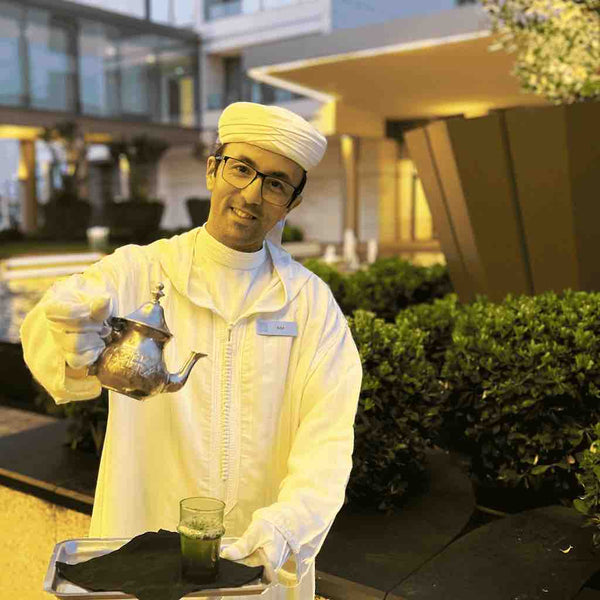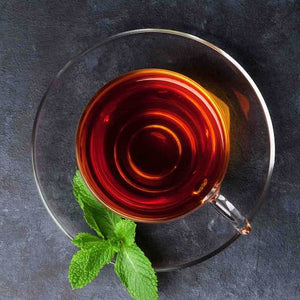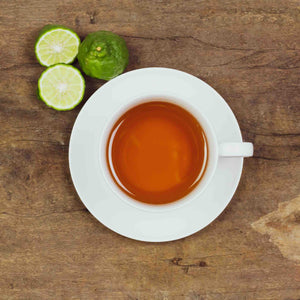Moroccan Mint Tea Master
Aug 15, 2025
Cultural Heritage | Moroccan Tea Ceremony
Innovative Valorization Project by Maison NANA1807
Moroccan Mint Tea is one of the most emblematic aspects of the culture and intangible heritage of the Kingdom of Morocco. More than just a drink, it represents a complex ritual , a social and cultural art , and a vector of values such as hospitality, sharing and conviviality . The preparation and serving of Moroccan Tea , when carried out with mastery, requires technical, artistic and social competence , giving rise to what could be considered an artistic profession in its own right : the tea ceremony master.
In this context, Maison NANA1807 , in partnership with academic and cultural institutions, is undertaking an innovative project aimed at structuring, promoting and training Moroccan Tea masters of ceremony , guaranteeing the preservation and transmission of this ancestral know-how while projecting it onto the international scene.

1. Historical and Cultural Context of Moroccan Tea
1.1 Introduction and Dissemination
Green tea, imported from China centuries ago, quickly became part of Moroccan social practices, giving rise to the mint tea we know today. The Moroccan tea ceremony , combining precise gestures, exact dosage and symbolic virtues, constitutes a cultural practice embedded in everyday life , from the family home to official receptions.
1.2 Social and Heritage Dimension
The service of Moroccan tea goes beyond the simple preparation of a drink: it involves welcoming guests , the execution of harmonious and precise gestures, as well as the transmission of values of respect and conviviality . These characteristics place the function of master of ceremonies in the category of traditional crafts , comparable to the artisans of ceramics, leatherwork or tapestry, which require technical skill and artistic sensitivity .
2. Moroccan Tea Ceremony Master | Emerging Craft
2.1 Definition and Role
The tea ceremony master, or Fannān al-Shāy (فنّان الشاي) , is a craftsman capable of:
-
Master the preparation of tea and infusions with precision, including dosage, temperature and infusion;
-
Perform artistic and harmonious gestures , giving the service an aesthetic and performative dimension;
-
Ensure the social and cultural dimension of the ceremony, by embodying the Moroccan values of sharing and respect.
2.2 Hierarchy and Recognition
Inspired by traditional crafts and international models, progression in the profession of master of ceremonies can be structured into several grades:
| Grade | Title | Description |
|---|---|---|
| Beginner / Initiated | Muharrik / Talib al-Shāy ( محرّك / طالب الشاي ) | Learn basic gestures, the history of tea and Mintéalogie |
| Experienced craftsman | Fannān al-Shāy ( فنّان الشاي ) | Mastery of ceremonies, creativity and autonomy in service |
| Master | Sayyid al-Shāy ( سيد الشاي ) | Supervises apprentices, organizes and directs official ceremonies |
| Grand Master / Heir to the Lineage | Sharīf al-Shāy ( شريف الشاي ) | Heritage recognition, guarantor of tradition and family or institutional lineage |
This hierarchy makes it possible to combine technical expertise, educational authority and respect for heritage , while providing a professional and academic framework.

3. Maison NANA1807 | Structuring and Promoting the Profession
3.1 Project Objectives
Maison NANA1807 undertakes to:
-
Preserve and transmit the ancestral know-how of the Moroccan Tea master of ceremony
-
Structure the training according to progressive levels validated by certification.
-
Promote the profession among Moroccan and international institutions.
-
Promote Moroccan Tea as an art of living and an intangible cultural heritage.
3.2 Training Program
The educational path includes:
-
Practical modules : preparation, dosage, pouring, decoration of the foam, service to guests.
-
Theoretical modules : history of tea, Mintéalogie, sociology of ritual, symbolism and protocol.
-
Research and innovation : scientific study of teas, aromatic plants, optimized gestures and sensory experiences.
The project is also supported by academic partnerships , such as the preparation of a University Diploma with the University of Évry , offering university recognition and an institutional framework for the certification of degrees.
4. Cultural, Heritage and International Impact
-
Preservation of Moroccan intangible heritage : the profession becomes structured, recognized and transmitted in a sustainable manner.
-
International promotion : cultural exchanges with other tea traditions (Japan, China, Korea), participation in international fairs and festivals.
-
Economic and social development : professional integration in hotels, tea rooms, cultural and gastronomic events.
-
Promotion of Mintealogy : science and art of Mint Tea , sensory and nutritional study.
5. Conclusion
The Moroccan Tea Ceremony Master represents a living, precious and universal heritage . Thanks to the initiative of Maison NANA1807 , this artistic profession can now be structured, recognized and promoted nationally and internationally , combining tradition, art, pedagogy and innovation. This project constitutes an exemplary model of cultural and heritage promotion , offering future generations of tea masters a solid framework to preserve and enrich the intangible heritage of Morocco while promoting it throughout the world.




